We were really surprised to find a place in Uruguay called Fray Bentos (and I bet we weren't the first - or last!) We thought it merited a visit and some research. The town did, indeed give its name to the Fray Bentos products including corned beef and the pies in tins, although this was not the main brand name until relatively recently. The story actually begins in the 1860s when a German company, Leibig, developed a process to concentrate beef and market it as OXO (first in small jars and later in the cubes). The meat was expensive in Europe so they set up a plant in Uruguay where cattle was cheap.
This product was used by Florence Nightingale, Scott on trips to the South Pole and was carried by Stanley when he searched for Livingstone. What really made Oxo famous was the First World War, when Oxo cubes were part of the standard emergency rations issued to troops. At home, wives collected wrappers and sent for the Oxo Trench Heater, a kit containing a stand for the mess tin and special lighters to put underneath to heat up the contents. By the end of the war, more than 100 million cubes had been sold and Oxo was a household name (despite being a German company at heart). However, the company had money problems in the1920s and sold out to an English company who massively enlarged and modernised the plant, renaming it 'El Anglo’.
The plant brought modern methods and ‘benevolent capitalism’ to Uruguay. Workers came from all over the world and were given ‘fair pay’, houses in the barrio still called El Anglo, boots and work clothes. The company set up health centres, schools and social meeting places including sports clubs. The factory generated its own electricity (the first in Uruguay) and sent its products all over the world. The scale of the operation was incredible and the company organised its businesses so that every part of the animal was used (although some, such as the skins, were sold on for processing).
The plant is now a decaying hulk. The museum has some interesting stuff and the guided tour took us around the buildings and the processes. However, it is hard to really imagine the hundreds of head of cattle arriving by train and being washed, killed, gutted and processed through the factory every day (although I’m not sure we really wanted to see that anyway!) Parts of the factory are interesting buildings that would, if fortunately placed in England, already be converted into apartments and smart cafés.
In Fray Bentos, despite the very best efforts of the local council, it all seems doomed to a slow lingering death. There are recurring stories of one company or another starting the thing up again but these have not yet ever come to anything. It’s not high season but there were 4 of us on the morning tour, not enough to pay the tour guide’s wages. (And anyway, they didn’t charge us, so we actually made a profit - admittance to the museum was included in our hotel tariff, there are no tickets so they gave us the cash to get in.)
Apart from the museum, there is little to see or do in Fray Bentos. A small museum shows paintings by a local artist Luis Solari that are a bit interesting but won’t detain you much longer than a half hour. The town has some attractive and peaceful little squares with seats that have the usual gangs of families sitting out until the early hours.
The hotel we are staying in gave us some free tickets for the town cinema but it only opens on Saturday and Sunday so we can’t use them. We walked by the river, which is swollen and has flooded all the picnic areas but has not spread into buildings because the riverside has high stone embankments. We watched a tugboat taking a bigger boat into the river and there were some lads canoeing but apart from that there wasn't much happening. We did manage to use the hotel's voucher to get a free ice cream in a local heladeria but we have been spoiled by Nonna Blanca’s in BA.
Fray Bentos; that sounds familiar!
Wednesday, November 25, 2009
 Fray Bentos, Uruguay
Fray Bentos, Uruguay
Other Entries
-
38Sarina to Kinka Beach (no, that was KinkA Beach!)
Sep 2462 days prior Kinka Beach, Australiaphoto_camera16videocam 0comment 2
Kinka Beach, Australiaphoto_camera16videocam 0comment 2 -
39Kinka Beach to 1770; that's a place, not a number!
Sep 2561 days prior 1770, Australiaphoto_camera48videocam 0comment 5
1770, Australiaphoto_camera48videocam 0comment 5 -
401770 to Rainbow Beach (but no pot of gold!)
Sep 2660 days prior Rainbow Beach, Australiaphoto_camera33videocam 0comment 0
Rainbow Beach, Australiaphoto_camera33videocam 0comment 0 -
41Beaches Wars! From Rainbow to Dicky!
Sep 2957 days prior Dicky Beach, Australiaphoto_camera23videocam 0comment 0
Dicky Beach, Australiaphoto_camera23videocam 0comment 0 -
42Dicky Beach to Brisbane: we made it!
Sep 3056 days prior Deagon, Brisbane, Australiaphoto_camera6videocam 0comment 2
Deagon, Brisbane, Australiaphoto_camera6videocam 0comment 2 -
43Brisbane: revisited and departed
Oct 1739 days prior Deagon, Brisbane, Australiaphoto_camera79videocam 1comment 6
Deagon, Brisbane, Australiaphoto_camera79videocam 1comment 6 -
44Buenos Aires: faded elegance
Oct 2828 days prior Buenos Aires, Argentinaphoto_camera32videocam 0comment 4
Buenos Aires, Argentinaphoto_camera32videocam 0comment 4 -
45Out and about in Buenos Aires
Nov 0124 days prior Buenos Aires, Argentinaphoto_camera66videocam 1comment 6
Buenos Aires, Argentinaphoto_camera66videocam 1comment 6 -
46Carlinhos Brown in Buenos Aires
Nov 0223 days prior Buenos Aires, Argentinaphoto_camera5videocam 0comment 1
Buenos Aires, Argentinaphoto_camera5videocam 0comment 1 -
47Rainy Days in Buenos Aires
Nov 0322 days prior Buenos Aires, Argentinaphoto_camera12videocam 0comment 0
Buenos Aires, Argentinaphoto_camera12videocam 0comment 0 -
48La Boca: Colour, life and tourist tat
Nov 0520 days prior Buenos Aires, Argentinaphoto_camera45videocam 0comment 0
Buenos Aires, Argentinaphoto_camera45videocam 0comment 0 -
49Madness, music and Las Madres
Nov 0619 days prior Buenos Aires, Argentinaphoto_camera19videocam 0comment 0
Buenos Aires, Argentinaphoto_camera19videocam 0comment 0 -
50Buenos Aires cafes and bars
Nov 0817 days prior Buenos Aires, Argentinaphoto_camera27videocam 0comment 4
Buenos Aires, Argentinaphoto_camera27videocam 0comment 4 -
51A very wet day in San Antonio de Areco
Nov 1312 days prior San Antonio de Areco, Argentinaphoto_camera36videocam 1comment 3
San Antonio de Areco, Argentinaphoto_camera36videocam 1comment 3 -
52Final days in Buenos Aires
Nov 187 days prior Buenos Aires, Argentinaphoto_camera90videocam 0comment 4
Buenos Aires, Argentinaphoto_camera90videocam 0comment 4 -
53Montevideo - it's not yet changed to Monte-DVD!
Nov 205 days prior Montevideo, Uruguayphoto_camera59videocam 0comment 5
Montevideo, Uruguayphoto_camera59videocam 0comment 5 -
54Salto; hot springs, wet rain
Nov 232 days prior Salto, Uruguayphoto_camera49videocam 0comment 4
Salto, Uruguayphoto_camera49videocam 0comment 4 -
55Fray Bentos; that sounds familiar!
Nov 25 Fray Bentos, Uruguayphoto_camera48videocam 0comment 0
Fray Bentos, Uruguayphoto_camera48videocam 0comment 0 -
56Colonia; every house a museum?
Nov 283 days later Colonia del Sacramento, Uruguayphoto_camera46videocam 0comment 6
Colonia del Sacramento, Uruguayphoto_camera46videocam 0comment 6 -
57Buenos Aires - Slight Return
Nov 305 days later Buenos Aires, Argentinaphoto_camera33videocam 3comment 4
Buenos Aires, Argentinaphoto_camera33videocam 3comment 4 -
58Hot News! Uruguay election results!
Dec 016 days later Buenos Aires, Argentinaphoto_camera1videocam 0comment 0
Buenos Aires, Argentinaphoto_camera1videocam 0comment 0 -
59What makes Rosario such a good place to live?
Dec 038 days later Rosario, Argentinaphoto_camera60videocam 0comment 8
Rosario, Argentinaphoto_camera60videocam 0comment 8 -
60Mercedes; final resting place of Gauchito Gil
Dec 0611 days later Mercedes, Argentinaphoto_camera33videocam 1comment 0
Mercedes, Argentinaphoto_camera33videocam 1comment 0 -
61Pellegrini; floating islands, crocs and big rats!
Dec 0813 days later Colonia Carlos Pellegrini, Argentinaphoto_camera73videocam 0comment 2
Colonia Carlos Pellegrini, Argentinaphoto_camera73videocam 0comment 2 -
62Your mission, if you choose to accept it...
Dec 1116 days later San Ignacio, Argentinaphoto_camera37videocam 1comment 1
San Ignacio, Argentinaphoto_camera37videocam 1comment 1 -
63Iguazu falls: so that's where all the rain went!
Dec 1520 days later Puerto Iguazú, Argentinaphoto_camera47videocam 2comment 1
Puerto Iguazú, Argentinaphoto_camera47videocam 2comment 1 -
64Out of Iguazu with a bang; on to Ciudad del Este
Dec 1621 days later Ciudad del Este, Paraguayphoto_camera10videocam 0comment 1
Ciudad del Este, Paraguayphoto_camera10videocam 0comment 1 -
65Encarnación - and we manage to see Jesús!
Dec 1823 days later Encarnación, Paraguayphoto_camera55videocam 0comment 2
Encarnación, Paraguayphoto_camera55videocam 0comment 2 -
66Asunción; we're travellers, get us out of here!
Dec 2025 days later Asuncion, Paraguayphoto_camera11videocam 0comment 2
Asuncion, Paraguayphoto_camera11videocam 0comment 2 -
67Xmas greetings!
Dec 2126 days later Resistencia, Argentinaphoto_camera1videocam 0comment 7
Resistencia, Argentinaphoto_camera1videocam 0comment 7 -
68Resistencia: city of sculpture
Dec 2227 days later Resistencia, Argentinaphoto_camera41videocam 0comment 0
Resistencia, Argentinaphoto_camera41videocam 0comment 0 -
69Our 'current' location
Dec 2328 days later Corrientes, Argentinaphoto_camera24videocam 0comment 1
Corrientes, Argentinaphoto_camera24videocam 0comment 1 -
70Salta: our first sight of the Andes and our Xmas!
Dec 2530 days later Salta, Argentinaphoto_camera35videocam 3comment 3
Salta, Argentinaphoto_camera35videocam 3comment 3 -
71Multicoloured mountains and angels with guns!
Dec 2732 days later Humahuaca, Argentinaphoto_camera53videocam 0comment 1
Humahuaca, Argentinaphoto_camera53videocam 0comment 1 -
72Following the Train To The Clouds
Dec 2934 days later San Antonio de los Cobres, Argentinaphoto_camera81videocam 0comment 0
San Antonio de los Cobres, Argentinaphoto_camera81videocam 0comment 0 -
73Cafayate; days of wine, icecream and waterways
Jan 0238 days later Cafayate, Argentinaphoto_camera42videocam 0comment 3
Cafayate, Argentinaphoto_camera42videocam 0comment 3

 Fray Bentos, Uruguay
Fray Bentos, Uruguay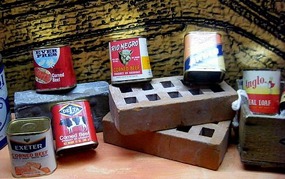
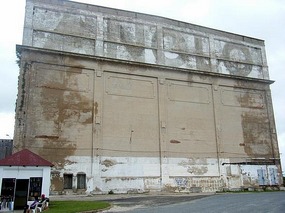
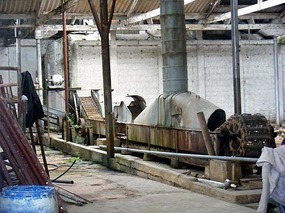
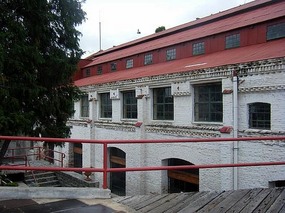

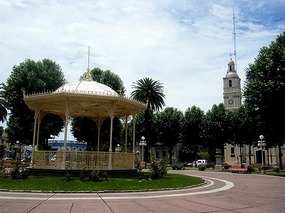




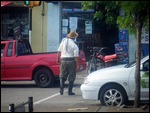
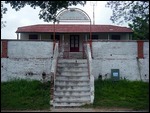
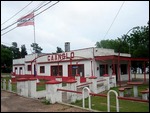
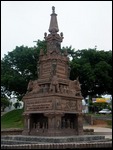
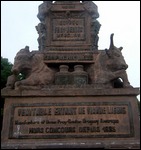
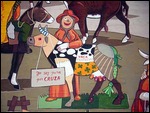
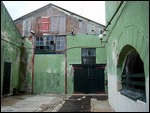

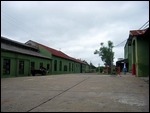
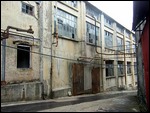
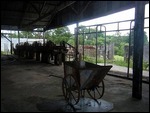
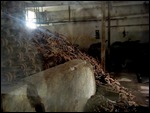
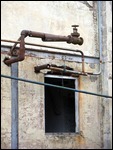
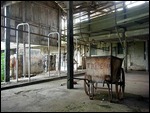
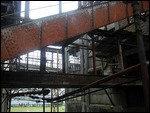
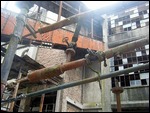

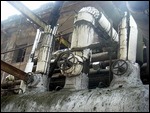
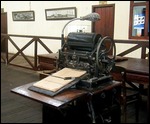

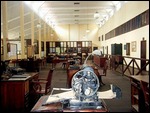
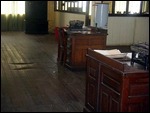


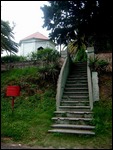
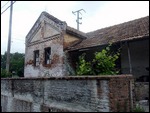
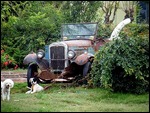


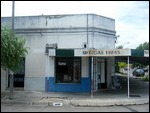
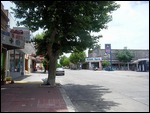

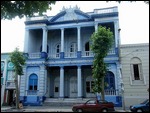
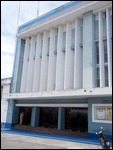
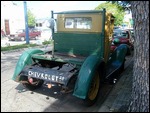

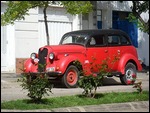

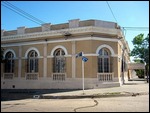



2025-05-22